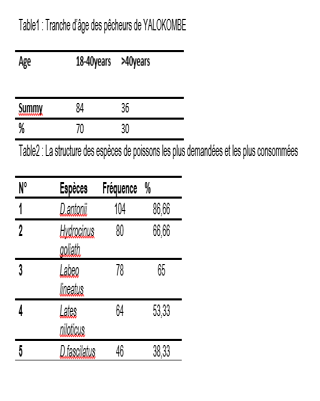ANNUAL STUDY OF FISH CATCH AND IDENTIFICATION OF THE MOST CAPTURED SPECIES, THE MORE CONSUMED IN KISANGANI AND ITS SURROUNDINGS IN THE DRC YALOKOMBE CASE
An annual socio-economic study of fish catch and determination of the most caught, most consumed species was conducted in Kisangani and its surroundings, Yalokombe case, with a sample of 120 fishermen.
The aim of this study was to identify participants, along the value chain, to analyse the dynamics of production, packaging and marketing, to make a technical analysis at all strategic levels of the fishing industry for understand me organization operation and ultimately develop an intervention strategy to help the sector and improve their performance.
The study was conducted in YALOKOMBE, a village at kilometer 52, Kisangani Road to word Yangambi, Democratic Republic of Congo, following a wide range of different gear and techniques, thus allowing the capture of multiple species of fish. The catch structure at Yalokombe has a larger number of species in total. Ichtyological surveys show a fauna of 13 species divided into 8 families.
The specific aboundance fish not sold by Yalokombe fishermen was of 5 species belonging to 4 families. Several species of fish are requested and consumed by consumers. With a total of 8 species identified and divided into 6 families.
Fish catches have decreased on the Congo River, with 100% of respondents unanimously saying the decline.
There are conflicts between the fishermen of Yalokombe, there are also several difficulties of various origins experienced by fishermen of the Congo River.
The results showed that in Yalokombe village, 70% of fishermen are in the 18-40 years old and 30% age group over the age of 40; 86,66% de D.antonii ; fellowed by Hydrocinus goliath with 66,66% ; higher than Labeo lineatus with 65% ; higher than Lates niloticus with 53,33% ; fellowed by D.fascilatus with 38,33.
There are several productive activities in Yalokombe, of which fishing ranks first as the main activity with 95%. The second activity is agriculture with 16.66%.
And there are strategies that can be adopted to develop fishing activity in Yalokombe.
